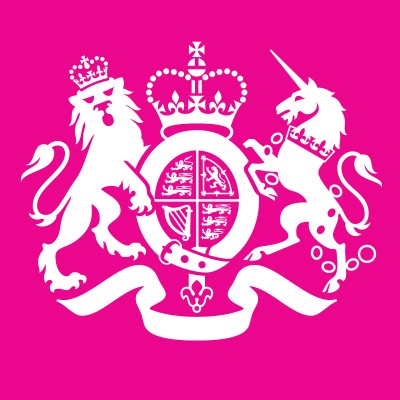The Trade Tango: Navigating New Agreements and Tariffs
March 20, 2025, 4:06 am

Location: United Kingdom, Wales, Newport, Wales
Employees: 1001-5000
Founded date: 1954

Location: Belgium, Brussels-Capital, Brussels
Employees: 1001-5000
Founded date: 1958
Total raised: $310.85K
In the world of trade, timing is everything. Countries dance around negotiations, each step critical to the rhythm of global commerce. Recently, India has taken center stage, pushing for swift outcomes in its trade discussions with the United States. Meanwhile, the U.S. is preparing to implement reciprocal tariffs that could shake the foundations of international trade.
India's Commerce Secretary, Sunil Barthwal, is advocating for a fresh approach to free trade agreements (FTAs). He argues that lengthy negotiations can lead to disinterest among businesses. It’s like waiting for a bus that never arrives. Instead, Barthwal suggests breaking down the process into manageable chunks. By focusing on core trade issues first, India hopes to achieve early wins. This strategy could keep businesses engaged and eager for more.
India is not alone in this pursuit. The nation is also in talks with several other countries, including the United Kingdom, the European Union, Oman, and New Zealand. Each negotiation is a thread in a complex tapestry of global trade. The goal is clear: to create a network of agreements that bolster economic ties and foster growth.
On the other side of the ocean, the U.S. is gearing up for a different kind of trade challenge. President Trump’s administration is set to roll out new reciprocal tariffs on April 2. This move is designed to level the playing field. Countries will receive a tariff number that reflects their own rates and trade barriers. It’s a game of give and take, where the stakes are high.
The White House has made it clear: unless trade barriers are equalized, tariffs will go into effect. This creates a sense of urgency. Countries must act quickly to negotiate lower tariffs or face the consequences. The clock is ticking, and the pressure is mounting.
The complexities of these tariffs are not lost on U.S. officials. The U.S. Trade Representative’s office is working diligently to design a plan that considers the unique circumstances of each trading partner. With 186 members in the World Customs Organization, each with different duty rates, this task is no small feat. It’s like trying to solve a Rubik’s Cube—each twist and turn affects the overall picture.
As the deadline approaches, financial markets are on edge. Investors are wary of how these tariffs could impact inflation and economic growth. U.S. stocks have already felt the tremors, dipping in response to the uncertainty. The trade landscape is shifting, and everyone is watching closely.
In this high-stakes environment, countries are scrambling to avoid the impending tariff wall. India, for instance, is proactively seeking to resolve tariff disputes with the U.S. After a recent meeting between Prime Minister Modi and President Trump, both nations agreed to work on the first segment of a trade deal by fall 2025. The aim is ambitious: to reach a two-way trade of $500 billion by 2030. It’s a bold vision, but the path is fraught with challenges.
The U.S. administration is particularly focused on the “Dirty 15”—countries with the highest tariffs and significant trading volumes with the U.S. These nations often impose regulations that hinder U.S. products from entering their markets. It’s a tangled web of barriers that the U.S. is determined to untangle.
Meanwhile, the U.K. is also making strides in its trade discussions with the U.S. British business and trade minister Jonathan Reynolds recently visited Washington to explore a bilateral trade deal focused on technology. This reflects a broader trend of nations seeking to solidify their economic partnerships in an increasingly competitive global landscape.
As these negotiations unfold, the importance of adaptability becomes clear. Countries must be willing to pivot and adjust their strategies in response to shifting dynamics. The trade game is not static; it’s a fluid dance that requires finesse and foresight.
In conclusion, the world of trade is a complex interplay of negotiations, tariffs, and agreements. India’s push for early outcomes in its FTAs represents a proactive approach to fostering economic growth. Meanwhile, the U.S. is preparing to implement reciprocal tariffs that could reshape its trade relationships. As countries navigate this intricate landscape, the stakes are high, and the need for collaboration has never been more critical. The trade tango continues, and all eyes are on the dance floor.
India's Commerce Secretary, Sunil Barthwal, is advocating for a fresh approach to free trade agreements (FTAs). He argues that lengthy negotiations can lead to disinterest among businesses. It’s like waiting for a bus that never arrives. Instead, Barthwal suggests breaking down the process into manageable chunks. By focusing on core trade issues first, India hopes to achieve early wins. This strategy could keep businesses engaged and eager for more.
India is not alone in this pursuit. The nation is also in talks with several other countries, including the United Kingdom, the European Union, Oman, and New Zealand. Each negotiation is a thread in a complex tapestry of global trade. The goal is clear: to create a network of agreements that bolster economic ties and foster growth.
On the other side of the ocean, the U.S. is gearing up for a different kind of trade challenge. President Trump’s administration is set to roll out new reciprocal tariffs on April 2. This move is designed to level the playing field. Countries will receive a tariff number that reflects their own rates and trade barriers. It’s a game of give and take, where the stakes are high.
The White House has made it clear: unless trade barriers are equalized, tariffs will go into effect. This creates a sense of urgency. Countries must act quickly to negotiate lower tariffs or face the consequences. The clock is ticking, and the pressure is mounting.
The complexities of these tariffs are not lost on U.S. officials. The U.S. Trade Representative’s office is working diligently to design a plan that considers the unique circumstances of each trading partner. With 186 members in the World Customs Organization, each with different duty rates, this task is no small feat. It’s like trying to solve a Rubik’s Cube—each twist and turn affects the overall picture.
As the deadline approaches, financial markets are on edge. Investors are wary of how these tariffs could impact inflation and economic growth. U.S. stocks have already felt the tremors, dipping in response to the uncertainty. The trade landscape is shifting, and everyone is watching closely.
In this high-stakes environment, countries are scrambling to avoid the impending tariff wall. India, for instance, is proactively seeking to resolve tariff disputes with the U.S. After a recent meeting between Prime Minister Modi and President Trump, both nations agreed to work on the first segment of a trade deal by fall 2025. The aim is ambitious: to reach a two-way trade of $500 billion by 2030. It’s a bold vision, but the path is fraught with challenges.
The U.S. administration is particularly focused on the “Dirty 15”—countries with the highest tariffs and significant trading volumes with the U.S. These nations often impose regulations that hinder U.S. products from entering their markets. It’s a tangled web of barriers that the U.S. is determined to untangle.
Meanwhile, the U.K. is also making strides in its trade discussions with the U.S. British business and trade minister Jonathan Reynolds recently visited Washington to explore a bilateral trade deal focused on technology. This reflects a broader trend of nations seeking to solidify their economic partnerships in an increasingly competitive global landscape.
As these negotiations unfold, the importance of adaptability becomes clear. Countries must be willing to pivot and adjust their strategies in response to shifting dynamics. The trade game is not static; it’s a fluid dance that requires finesse and foresight.
In conclusion, the world of trade is a complex interplay of negotiations, tariffs, and agreements. India’s push for early outcomes in its FTAs represents a proactive approach to fostering economic growth. Meanwhile, the U.S. is preparing to implement reciprocal tariffs that could reshape its trade relationships. As countries navigate this intricate landscape, the stakes are high, and the need for collaboration has never been more critical. The trade tango continues, and all eyes are on the dance floor.